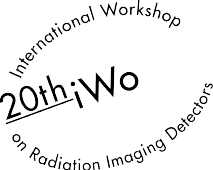Speakers
Description
Background: The quality of charged particle therapy treatments depends on the ability to predict and achieve a given particle range in the patient. Non-invasive moni- toring of the particle range can be performed by detecting with a dedicated PET system β+ emitters, produced in the patient as a result of nuclear interactions of charged hadrons with tissue, with a dedicated PET system. The correctness of the dose delivery can be verified by comparing measured and pre-calculated Monte Carlo space and time distributions. The reliability of Monte Carlo (MC) predictions is hereby a key issue. Most studies performed so far focus on long time intervals, where the signal is dominated by the β+ decays of 11C and 15O, and typically do not include β+ isotopes with shorter life-times.
Goal: In this work, we investigate the reliability of MC predictions of space and time (decay rate) profiles in various time intervals relevant for in-beam PET monitoring up to a few minutes after treatment. Moreover, we show how the decay rates can give an indication about the elements present in the phantom.
Methods and Materials: Various phantoms were irradiated in clinical and near- clinical conditions at the Cyclotron Centre of the Bronowice proton therapy centre. PET data were acquired with the DoPET system, a planar 16x16 cm2 PET system based on LYSO crystals and Hamamatsu H8500 position sensitive photo-multipliers. Monte Carlo simulations of particle interactions and photon propagation in the phantoms were performed using the FLUKA code. The analysis included a comparison between experimental data and MC simulations of space and time profiles, as well as a fitting procedure to obtain the various isotope contributions in the phantoms.
Results and conclusions: We show comparisons of the space and time distributions between data and Monte Carlo, including examples where the Monte Carlo and data are in slight disagreement (mostly in short-time intervals from the beginning of irradiation, i.e.,¡20 s). Moreover, we show how to separate the different isotope contributions including 11C, 15O, 10C and 8B in the various time intervals. Our results demonstrate that it is possible to obtain useful information about the treatment by using not only space but also time profiles.




